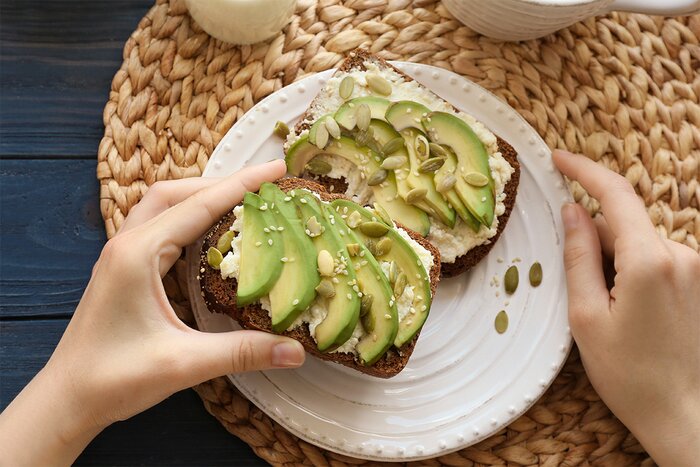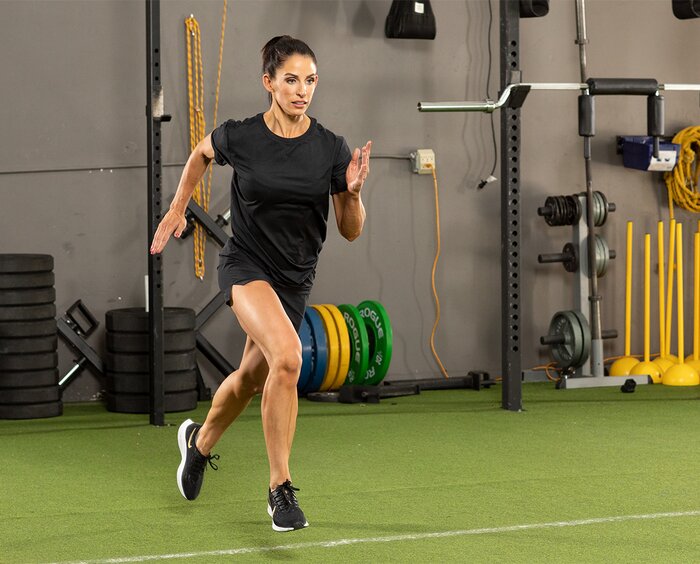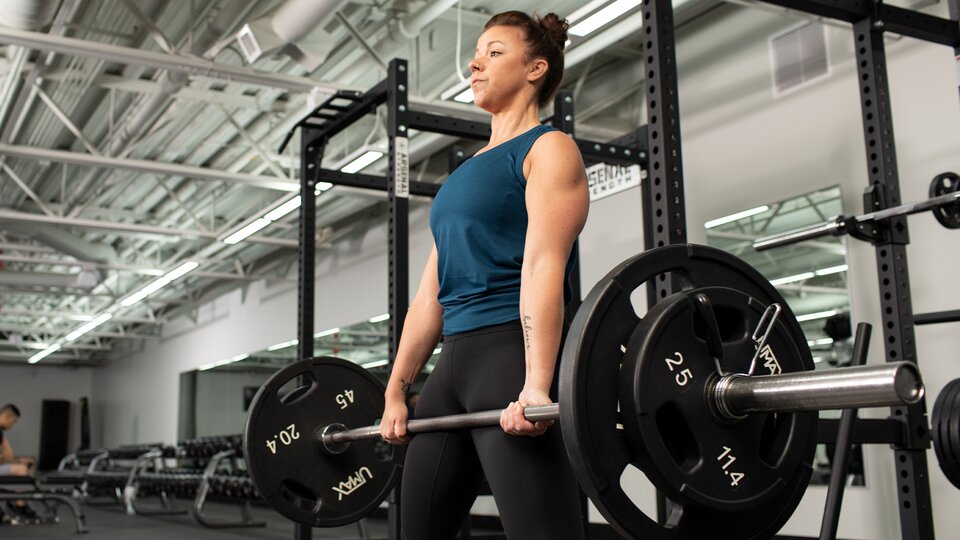Bodybuilding and fitness articles geared toward men often say you need to bulk up when you want to increase muscle tissue. But many women (and plenty of men) have no desire to get bulky while increasing lean mass. This approach works for both men and women who want to build muscle and reduce fat simultaneously, without ”bulking up.”
Adding muscle while burning fat is tricky to say the least. You have to eat enough to feed muscle growth while making smart nutritional choices to help your body preferentially tap into fat stores over muscle tissue. But diet on its own isn’t enough. To maximize results, you also need to perform a combination of resistance training and high-intensity cardio.
Here are my most effective techniques to help you walk the fine line between muscle building and fat loss.
1. Consume a Moderate Number of Calories
To walk the fine line of building muscle while burning fat, it’s imperative you find your caloric ”sweet spot.” You need to eat enough calories to fuel muscle building while encouraging release of fat from storage.
Remember, you’re not on a diet! You’re trying to increase muscle tissue while preferentially burning stored fat. Someone who is going all-out in the gym needs the proper balance of macronutrients and enough calories to fuel their efforts to build muscle and lose fat.
2. Bump Up Your Protein Consumption
Getting in plenty of protein, spread fairly evenly throughout the day, helps protect your muscle tissue from breakdown. When amino acids are floating around in your system, your body senses that it doesn’t need to break down muscle tissue to harvest them.
So, don’t be afraid to push protein consumption. Consider increasing your daily protein to at least 1 gram per pound of body weight. Really pushing it hard in the gym, or aiming to get seriously lean? You might benefit from more like 1.5 grams or more.

Yup. You read that right. It might sound like a lot, but recent research has shown that eating five times the current daily protein recommendation (0. 36 grams per pound of body weight) has shown no adverse impact on body-fat stores.
Furthermore, a high-protein diet has been shown to positively impact the number of calories you burn throughout the day. This manifests as an increase in the number of calories burned through the process of digestion, absorption, and distribution of nutrients, referred to as the thermic effect of food (TEF).
Trying to up your daily protein intake? There’s no easier way to do it than with a protein shake.
3. Cut Your Carbs
You knew this one was coming, didn’t you? Yeah, you’ve got to cut carbs—not completely, but to a point where they’re efficiently used. Consume most of your carbs when they benefit you the most: two hours before your workout and right after your workout. The rest of your carbohydrates throughout the day should come from high-fiber vegetables. Vegetables will help keep your energy in check and work to stave off hunger.
A good starting place is to aim for 1.5 grams of carbs per pound of body weight throughout the day. Of course, the amount of exercise you do in a given day will affect this. On non-training days, consider dropping your carbs to 0.75-1.0 gram per pound.
4. Eat Healthy Fats
Too many people outrageously slash their fat intake in an attempt to reduce body fat. Fats play an integral role in maintaining optimal cell structure and hormone levels, each of which are crucial for supporting a muscle-building environment. They also play a role in keeping you feeling full.

Strive to consume about 0.5 grams of fat for every pound of body weight each day. Make sure you include a variety of sources to reap the many benefits various types of healthy fats have to offer.
5. Train for Muscle Gain, Not Fat Loss
Spending time doing endless circuit training using light weight for high reps isn’t the best recipe for muscle gain. Instead, focus on integrating compound movements, such as squats, deadlifts, presses, and rows. These moves allow you to lift the most weight and stimulate the most total muscle mass possible, which is why they should be the foundation of each workout. Focus on increasing the weight you’re able to use over time while aiming for 5-8 reps per set.
You can still incorporate higher-rep training, but it should be with a weight that is challenging to complete 15-20 reps with. Incorporating a combination of heavy resistance training alongside high-repetition training is ideal for muscle growth.
6. Use Cardio to Burn Fat, Not Calories
One of the biggest mistakes people make when they’re trying to burn body fat is performing lengthy sessions of steady-state cardio. This works for burning calories, but it can also spin you into a caloric deficit where your body begins to preferentially burn muscle tissue over body fat.

Instead, when aiming for the combo of leanness and muscle, I recommend high-intensity interval training (HIIT) as your primary form of cardio. Why? HIIT has been shown to preserve muscle mass, and even enhance fat use as fuel. That’s a winning combination!
HIIT is very taxing for your body, so don’t attempt it every day. Do 1-3 sessions per week, with 3 as the absolute max. If you feel like HIIT is draining your energy in the weights department, scale back.
